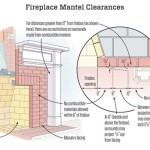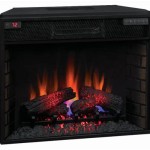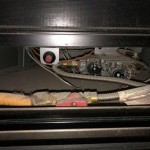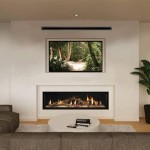Contemporary Ventless Natural Gas Fireplaces: Aesthetic Appeal and Functional Benefits
Ventless natural gas fireplaces have emerged as a popular heating and decorative option in contemporary homes. Their appeal lies in their ease of installation, aesthetic flexibility, and functional advantages compared to traditional wood-burning fireplaces or vented gas models. Understanding the intricacies of ventless fireplaces—their operation, safety features, installation requirements, and maintenance—is crucial for homeowners considering this heating solution.
A ventless natural gas fireplace, also known as a vent-free fireplace, operates without the need for a chimney or external venting system. Instead, these fireplaces are designed to burn fuel very efficiently, minimizing the production of harmful emissions. The small amount of exhaust, primarily water vapor and carbon dioxide, is released directly into the living space. This direct release is precisely why proper operation and adherence to safety guidelines are paramount. The key to safe operation lies in the Oxygen Depletion Sensor (ODS) and the specific design requirements to ensure sufficient airflow within the room.
Unlike their vented counterparts, ventless fireplaces offer greater installation flexibility. They can be placed virtually anywhere within a home that meets the minimum room size and ventilation requirements stipulated by the manufacturer and local building codes. This adaptability makes them attractive for renovations, additions, and spaces where installing a chimney or vent is impractical or cost-prohibitive.
Understanding the Operation and Safety Mechanisms
The operation of a ventless natural gas fireplace hinges on its efficient combustion process. The fireplace is designed to burn natural gas almost completely, reducing the production of carbon monoxide to levels deemed safe by regulatory bodies. This near-complete combustion relies on a precisely calibrated air-to-fuel ratio. Any deviation from this ratio can lead to incomplete combustion and increased carbon monoxide production, which is why routine maintenance and inspection are essential.
The Oxygen Depletion Sensor (ODS) is the cornerstone of ventless fireplace safety. This sensor continuously monitors the oxygen levels in the room. If the oxygen level drops below a predetermined threshold, typically around 18%, the ODS automatically shuts off the gas supply to the fireplace. This function prevents the fireplace from operating in an oxygen-deprived environment, which could lead to elevated carbon monoxide levels. The ODS acts as a critical safety net, mitigating the risk of carbon monoxide poisoning.
In addition to the ODS, modern ventless fireplaces incorporate various other safety features. These include overheat sensors, which shut off the fireplace if it reaches an unsafe temperature, and flame failure devices, which stop the gas flow if the flame is extinguished unintentionally. Some models also include child safety locks to prevent unauthorized operation. The combination of these safety systems provides multiple layers of protection, minimizing the potential for accidents.
Furthermore, proper installation and adherence to manufacturer guidelines are crucial for safe operation. The fireplace must be installed in a room that meets the minimum square footage requirement. This requirement ensures sufficient air volume to dilute any emissions and maintain acceptable oxygen levels. The room must also have a source of fresh air, such as a window or door that can be opened, to further enhance ventilation. Local building codes often specify additional ventilation requirements for ventless fireplaces, and it is essential to comply with these regulations.
Installation Considerations for Ventless Fireplaces
Installing a ventless natural gas fireplace involves careful planning and adherence to specific requirements. While seemingly simpler than installing a vented fireplace due to the absence of a chimney, proper installation is critical for ensuring safety and optimal performance. The installation process typically involves connecting the fireplace to the natural gas supply, securing it in place, and verifying its operation.
First, the homeowner needs to ensure that the existing natural gas supply can adequately support the fireplace's BTU (British Thermal Unit) rating. The BTU rating indicates the amount of heat the fireplace can generate. If the gas supply is insufficient, it may need to be upgraded to accommodate the increased demand. A qualified gas technician should perform this assessment and any necessary upgrades.
The fireplace must be installed on a non-combustible surface, such as brick, concrete, or tile. This requirement prevents the fireplace from igniting nearby flammable materials. Clearances to combustible materials, such as walls, furniture, and curtains, must also be maintained according to the manufacturer's specifications. Failure to observe these clearances can create a fire hazard.
Ventless fireplaces can be installed as freestanding units, wall-mounted units, or inserts into existing fireplaces. The specific installation procedure will vary depending on the type of fireplace and the existing structure. It is highly recommended that a qualified installer, preferably one with experience in installing ventless gas appliances, perform the installation. This ensures that the fireplace is installed correctly and safely, and that all necessary connections are properly made.
Following installation, the fireplace should be thoroughly tested to verify its proper operation. This includes checking for gas leaks, ensuring that the ODS is functioning correctly, and confirming that the flame burns cleanly and efficiently. The installer should also provide the homeowner with detailed instructions on how to operate and maintain the fireplace.
Maintenance and Operational Best Practices for Longevity
Maintaining a ventless natural gas fireplace is essential for ensuring its continued safety and efficiency. Regular maintenance helps prevent problems such as incomplete combustion, carbon monoxide buildup, and malfunctions of safety devices. Proper operation also plays a crucial role in maximizing the fireplace’s lifespan and minimizing the risk of accidents.
Annual inspection and cleaning by a qualified service technician is highly recommended. During this inspection, the technician will check the burner for debris or obstructions, clean the pilot light, and inspect the ODS for proper functionality. They will also test the gas pressure and adjust the air-to-fuel ratio if necessary. This professional maintenance ensures that the fireplace is operating within safe parameters.
The homeowner can perform some basic maintenance tasks on a regular basis. This includes cleaning the glass panel with a mild glass cleaner to remove dust and soot buildup. The area around the fireplace should also be kept clear of flammable materials. It is important to avoid using the fireplace as a shelf or placing objects on top of it.
Proper operation is equally important. Never operate the fireplace for extended periods without adequate ventilation. Even though the ODS is designed to shut off the fireplace if oxygen levels drop, it is always best to provide a source of fresh air. Avoid operating the fireplace in a sealed room with no ventilation. Following the manufacturer's recommended operating procedures will optimize both performance and safety.
Be vigilant for any signs of malfunction, such as unusual odors, sooting on the walls or ceiling, or a yellow or orange flame. These symptoms may indicate incomplete combustion and the potential for carbon monoxide production. If any of these signs are observed, immediately turn off the fireplace and contact a qualified service technician.
Finally, it is crucial to install and maintain a working carbon monoxide detector in the home. The detector should be placed near the fireplace and tested regularly to ensure it is functioning properly. A carbon monoxide detector provides an additional layer of safety by alerting occupants to the presence of this odorless, colorless gas, even if the ODS malfunctions.
Ventless natural gas fireplaces offer a blend of aesthetic appeal and functional heating capabilities, making them a suitable choice for many contemporary homes. However, it is crucial to understand the principles of their safe operation, the importance of proper installation, and the necessity of regular maintenance. By adhering to these guidelines, homeowners can enjoy the benefits of a ventless fireplace while minimizing the potential risks.

Ventless Gas Fireplace Vent Free Modern

One6 Vf SÓlas Contemporary Fireplaces

Ventless Gas Fireplace Vent Free Modern
:max_bytes(150000):strip_icc()/ventless-gas-fireplaces-4160746-hero-f9d4bdcd9bd446eb84406de306f790ba.jpg?strip=all)
How To Pick Out A Ventless Gas Fireplace

Superior 45 Contemporary Linear Vent Free Fireplace Vrl3045 Us

Natural Gas Fireplace Stones Vent Free European Home Contemporary Open Hearth Standing

Superior Drl4048 48 Linear Contemporary Direct Vent Natural Gas Firep Us Fireplace

Best Vent Free Ventless Fireplaces To Buy In 2024 Fireplace Gas

Monessen Solstice Contemporary Vent Free Gas Insert Mount Airy Oil Company

Artisan 60 Inch Vent Free Linear Fireplace Fine S Gas
Related Posts








